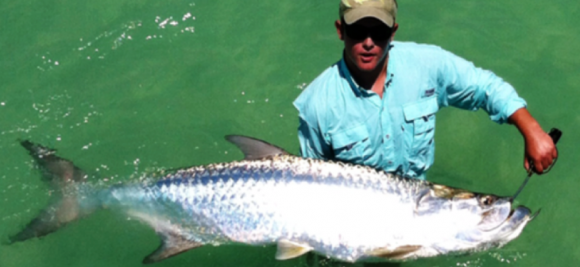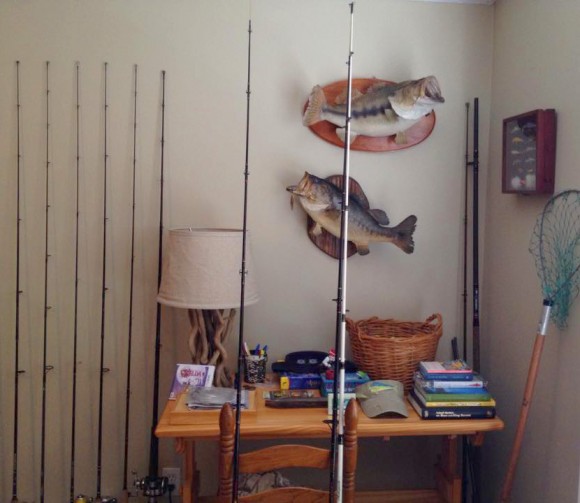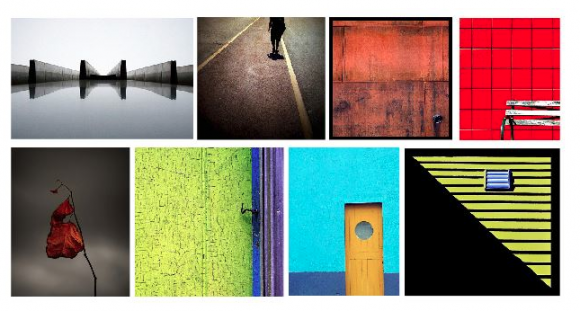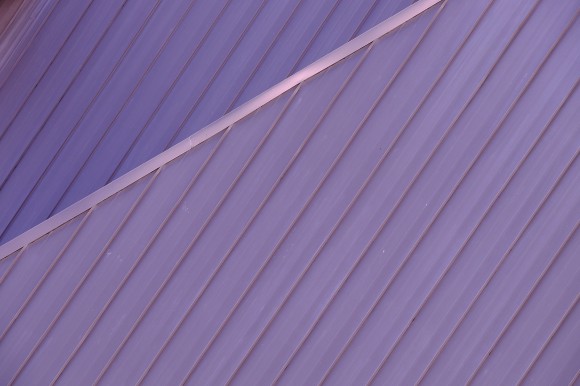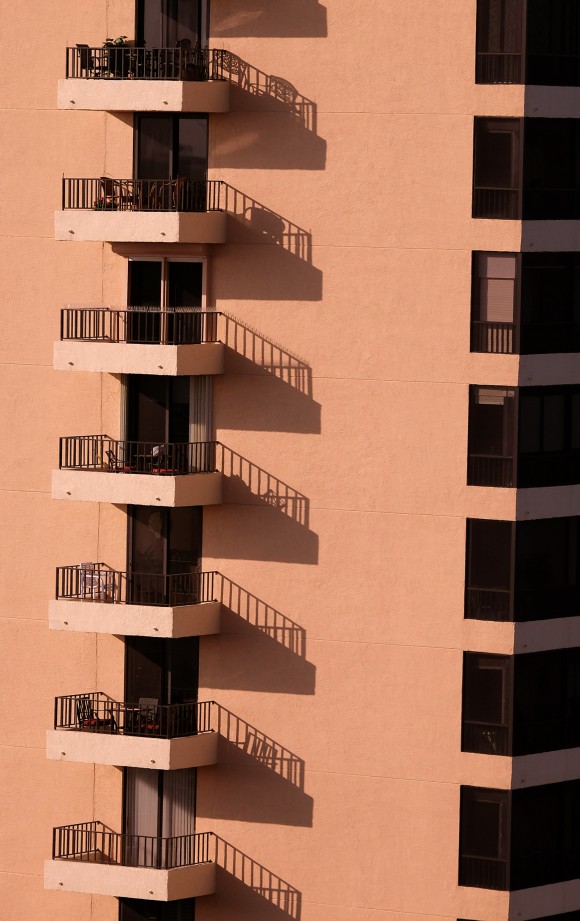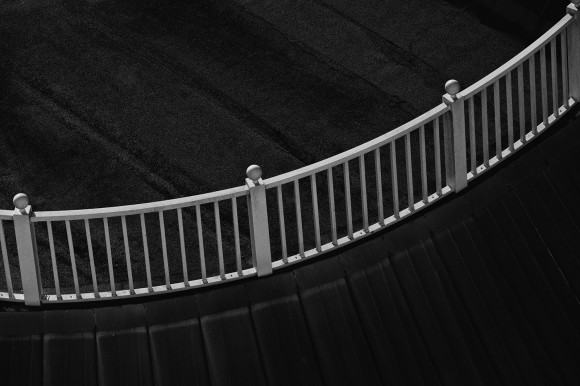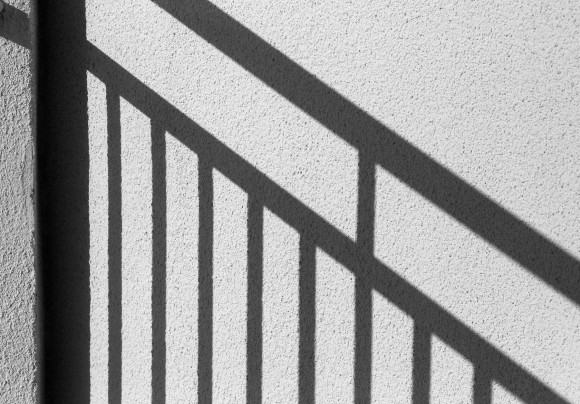Monthly Archives: March 2015
I’m a proud grandfather of 6 great grandchildren, and I love them all, but one is unique, special, and one dang good fisherman! Benjamin Luke Fortney is my oldest grandson, son of Scott and Diane Fortney, Scott is my oldest son. I love Hannah, my oldest grand daughter, but her story comes later! Today I want to share about Ben!
It probably all started when many years ago the Florida Fortney’s visited us in Kentucky and Scott took Ben fishing at a local stream, the image below says it all, from that day on Ben was a fisherman!
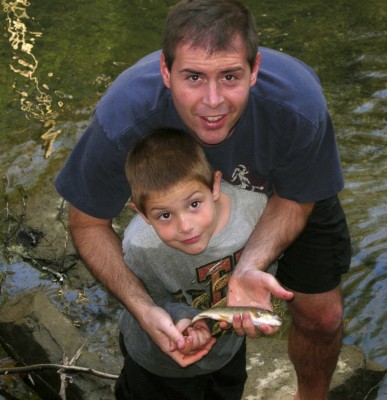 Ben has gone on to learn a great deal about fishing and living in North Florida he has the perfect playground to practice his craft. Ben is a bait fisherman, bait caster, fly fisherman (ties his own beautiful flies!), bass fisherman, fishes with plugs, spinners, worms, and is an avid shore fisherman. He has landed single fish that their weight exceeds my life time accumulative weight of fish caught!!!
Ben has gone on to learn a great deal about fishing and living in North Florida he has the perfect playground to practice his craft. Ben is a bait fisherman, bait caster, fly fisherman (ties his own beautiful flies!), bass fisherman, fishes with plugs, spinners, worms, and is an avid shore fisherman. He has landed single fish that their weight exceeds my life time accumulative weight of fish caught!!!
Ben’s list of fish varieties that he has studied and caught is just about the contents of any good fish book out there.
His next big category is a hammerhead shark. You must catch and release them, and I know he will, but his goal is at least a 10 footer. No doubt I’ll get a iPhone image soon showing that catch!
His room is decorated with a bewildering assortment of rods, reels and fishing lures and he proudly displays some of his great great grandfathers classic wooden plugs and some of the fish his great great grandfather and great grandfather caught and had mounted.
 Ben is shown to the left holding his latest reel acquisition, a deep sea rod and reel made just of the big fish he is going after this spring. Ben is a great young man, a good student and real man of his word. I’m proud to call him my grandson, and I sure wish he would teach me to fish!!!!
Ben is shown to the left holding his latest reel acquisition, a deep sea rod and reel made just of the big fish he is going after this spring. Ben is a great young man, a good student and real man of his word. I’m proud to call him my grandson, and I sure wish he would teach me to fish!!!!
Being a grandfather is an awesome treasure and great responsibility! I try to spend as much time as I can with my grand children and pass on some of the life lessons I’ve learned over the past half century plus 19 years. Fortunately for me my grandchildren still listen and I truly enjoy their company! Now if Ben could just help me catch a 12 pound bass!!!
I’m blessed,
the pilgrim
I apologize for the image quality, all iPhone 4s wish I had used my Fuji X100T!!!
This post has 8 comments. Click here to read them
This entry was posted on Monday, March 2nd, 2015 at 3:50 pm
You can follow any responses to this entry through the RSS 2.0 feed.
I spoke to the Orlando Camera Club a few years ago and it was a frightening experience! This is one of the best and most talented camera clubs in America, and in fact has been named so on several occasions!!! To stand in front of this group and share is a daunting affair! One of the bonuses of getting to know that group is that I get their email newsletter, and it always contains some great images and information. This article by Simon Bray, a terrific shooter, was of real interest to me and I thought I would share it with you. I tried in vain to reach Simon and Wayne Bennett and both were out of pocket, but knowing this club they are dedicated to educating others and I’m sure Simon would welcome my reprinting his article, if not, my future posts will be from prison!
We often hear the phrase ‘less is more’, and this couldn’t be more apt than when appreciating minimalism. When executed well, minimalist photography can be an extremely simple but dramatic way to capture images. But how should we interpret, understand and execute minimalism within our own work
Step 1. Understand Minimalism
Minimalism is a style employed by many 20th Century artists, using a minimum amount of components such as colour, shape, line and texture. Within the art world it is considered an extremely subjective concept, leaving interpretation and meaning up to the viewers perception of the work.
Some appreciate the openness of this idea, embracing the freedom of interpretation, where others despise the lack of direction or subject matter. For photographers, this is less of an issue, as more often than not, a photo remains a real-life moment captured on film. Despite this, we can employ some of the techniques of minimalism to enhance the impact of our work.
Step 2. Keep It Simple
When understanding how to achieve minimalism, the rule is to keep it simple. But that doesn’t mean it needs to be boring or uninteresting. Try to pick a striking and engaging subject that will catch the eye. The subject has to be the strongest element of the shot, even though it may not take up the majority of the frame.
Before you take your shot, take a moment to consider what you are going to include in your shot, but also what you are going to leave out. The space around a subject will accentuate it’s prominence, so look to zoom in or crop out any distractions.
Step 3. Composition
Achieving a strong compositional element to a minimalist photo is absolutely key in enhancing the impact of the shot. Like I mentioned in Step 2, what you leave out is just as important as what you leave in, so take some time to consider the structure of the subject and the space within which it is placed.
The “rule of thirds” applies here and will help when deciding how to frame your subject. Strong composition can also incorporate square structures and line, which we will come to later on, but keep an eye out for strong shapes and lines which might lend themselves to a minimalist shot.
Be sure to focus in on the subject, and if possible, select a depth of field that will make the subject stand out, this will draw the eye into the shot and enhance impact.
Step 4. Complimentary Colour
The use of colour in minimalist photography is highly evident and it is an extremely useful tool when it comes to capturing an eye catching yet simple shot. What many minimalist photos lack in subject matter they make up for in colour and in this case, the brighter the better!
Try to use the available light to bring out the colours within the scene. Many shots work based around a single colour, including both the subject and the background, but this can be difficult to find, so keep an eye out for either colours that compliment each other, or a combination of contrasting colours.
Step 5. Strong Line
In a similar way to the use of colour in minimalist photography, the effectiveness of line within a shot can be vital in adding to the image when subject matter is limited. As I mentioned before, strong horizontal or vertical lines lend themselves to strong composition, as they will give a solid structure to the image.
The old adage of using line to draw the eye into the shot is also relevant here. Consider where the line is leading, for example from the centre of the image leading away to the edge, or from a corner into the centre, with regard to what you want to the viewer to take away from the image.
Step 6. Getting All Touchy Feely
Like a lot of minimalist art, some minimalist shots are based purely on texture and colour, yet they grab your attention even without any distinct subject matter. For this, you need not only an engaging surface, but also the means to capture it in an interesting way.
Consider whether there is any direction to the texture and whether that line can be used effectively in a compositional sense. Try to use light to enhance the texture, to bring out the contrast and look to capture the image so the viewer could almost feel what they are seeing.
Step 7. Keep Your Eyes Open
Once you have spent some time studying minimalist examples, you’ll begin to appreciate the examples of minimalism that surround you each and every day. When you’re out and about, keep your eyes open for spaces and blocks of colour, interesting subjects that stand alone and clean lines. Look up, look down, keep searching and you will be rewarded.
A good place to start might be within geometric shapes found within architecture, which often include a whole wall of re-occurring pattern that can be exploited as a minimalist photo.
Step 8. Process
Processing minimalist shots should be reasonably simple, as having captured your shot, you should have a good notion of what you want to produce-something simple but dramatic. Something you might want to consider is experimenting with the more surreal images, using an artistic viewpoint to create an image that may be unrecognisable from it’s original state but functions instead as a piece of art.
However, you may also want to stay true to life and simply process your image with a focus on bringing out the subject and enhancing the lines and colour within the shot.
Step 9. Tell the Story
Many minimalist photos are eye catching, featuring simple lines, appealing colours and could be considered an artistic expression, but once you’ve mastered capturing appealing images; it’s time to take on a greater challenge. Can you tell a story through a photo shot in a minimalist style? Is it possible to convey a scene or event using reduced subject matter, colours and shapes?
To achieve this, you may well need to incorporate some interest from light, people or movement, but next time you’re out shooting an event, once you’ve got all the shots you need, try summing up the event in one shot using as little subject matter as possible, you might surprise yourself!
Step 10. Get Creative
So hopefully now you have a basic understanding of minimalist photography and have a few techniques and tips to help you on your way with capturing your own minimalist images. As I said before, keep your eye out for possible shots and remember to keep it simple, the more eye catching the better.
Don’t be afraid to get creative. Minimalism can be a very subjective topic, so what you appreciate, others may not, but get out there, see what you can find and get snapping!
Thanks Simon, great information!
Blessings,
the pilgrim
Early morning shoot Sanibel Island, inspired by Simon!
…..and this is for my dear brother Homer, after the sweet note he left me, yesterday, this is the sign at the Sanibel Island Visitor Center
This post has 8 comments. Click here to read them
This entry was posted on Sunday, March 1st, 2015 at 1:07 pm
You can follow any responses to this entry through the RSS 2.0 feed.




